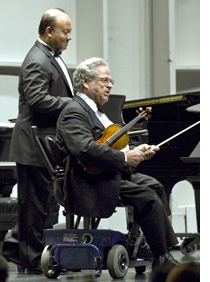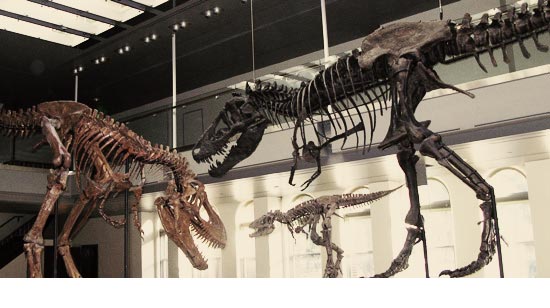Overdue Topanga Library back on track
January 25, 2011
For a while, Westside book lovers feared there might be no happy ending. But after nearly a year of revisions, disputes and other construction issues, the long-delayed Topanga Library is back on schedule again.
After months of negotiations with the county, the project’s main contractor, FEI Enterprises, Inc., has agreed to resolve scores of outstanding or disputed change requests that had helped put the project at least a year behind schedule.
A change order for $645,651.52 approved today by the Board of Supervisors settled the last of the differences, clearing the way, among other things, for FEI to finish the project.
As a result, the library is now scheduled to open this fall.
“We’ve worked out the issues between us,” said Kamel Youssef, senior capital project manager at the Los Angeles County Department of Public Works. “The project is making good progress now.” (Click here for a photo gallery of early work on the library.)
The various disputes and delays, outlined in a letter to the board from Chief Executive Officer William T. Fujioka, ranged from planning problems to complications resulting from the discovery of Native American artifacts. Some were resolved separately by Public Works while others ended up being settled in the change order approved by the board on Tuesday.
Long sought by Topanga residents, who for generations have had to rely on bookmobiles and other communities’ libraries, the new facility—now estimated to come in at a total cost of $19.5 million—will bring a 42,000-volume permanent library to North Topanga Canyon Boulevard in the center of the mountain town.
Filled with civic art and built to the latest green construction standards, the new building will cover more than 11,000 square feet, featuring a reading area for adults, a community meeting room, an after-school homework center for students, teen and children’s areas, public-access computers, express-service checkout machines and a ground-floor garage.
The project, which broke ground in 2008, originally had a tentative opening date of summer 2009, which was stretched by various construction delays into the spring, and then the summer of 2010. But according to the board letter, disputes with the contractor began to arise early that year after FEI submitted a series of requests for costs of additional work it claimed had to be done because of alleged deficiencies in plans and specifications and various site-related issues.
“While there may have been some merit to some of these assertions, FEI’s proposals . . . lacked sufficient clarity, detail and justification to support the requested costs,” the board letter said. “Also, Public Works believed that FEI’s performance of the work was much slower than required by the approved schedule due to a lack of manpower and changes in FEI’s management staff.”
Posted 1/25/11
Perlman plays Disney Hall
January 20, 2011
 Internationally renowned violinist Itzhak Perlman returns to Walt Disney Concert Hall in recital with Sri Lankan-born Rohan de Silva for a special program featuring violin and piano sonatas by Beethoven, Saint-Saëns and Leclair.
Internationally renowned violinist Itzhak Perlman returns to Walt Disney Concert Hall in recital with Sri Lankan-born Rohan de Silva for a special program featuring violin and piano sonatas by Beethoven, Saint-Saëns and Leclair.
The performance begins Tuesday, January 25, at 8:00 p.m.; full details may be found here.
Posted 1/20/11
This is no ordinary puppet show
January 20, 2011
 It’s World City at the Music Center this weekend when the Chen Kuai Le Puppet Theater comes to town, weaving its spell of enchantment through traditional Taiwanese music and puppetry. The troupe is led by Shi-Mei Chiang, Taiwan’s leading female puppeteer, and it’s a family affair: her son and grandson are among the performers keeping alive this ancient art form for future generations to appreciate and enjoy.
It’s World City at the Music Center this weekend when the Chen Kuai Le Puppet Theater comes to town, weaving its spell of enchantment through traditional Taiwanese music and puppetry. The troupe is led by Shi-Mei Chiang, Taiwan’s leading female puppeteer, and it’s a family affair: her son and grandson are among the performers keeping alive this ancient art form for future generations to appreciate and enjoy.
They present two free matinee performances on Saturday, January 22 at Disney Hall’s W.M. Keck Foundation Children’s Amphitheatre, but you’ll need to get tickets in advance, starting at 10:00 a.m for the 11:00 a.m. show, and at 11:00 a.m. for the 12:30 p.m. show. Line up outside at Grand Ave. and 2nd Street, near the entrance to the Hall’s outdoor amphitheatre space.
For full details, please visit the Music Center website here, or call (213) 972-4396.
Posted 1/20/11
Shuttle off to the Hollywood Bowl
January 20, 2011
 This summer, avoid the stress of traffic and parking by taking a shuttle to the Hollywood Bowl, the largest natural outdoor amphitheatre in the United States.
This summer, avoid the stress of traffic and parking by taking a shuttle to the Hollywood Bowl, the largest natural outdoor amphitheatre in the United States.
The Board of Supervisors voted Tuesday to continue the $2.2 million Park-and-Ride and Shuttle Program that began in 1973. The costs are shared by Los Angeles County, Metro and the riders. The County portion comes from voter-approved funding aimed at developing and improving local public transportation.
In the Third District, Park-and-Ride shuttles depart from Santa Monica, Beverly Hills, Sherman Oaks, and Chatsworth, along with 10 other locations countywide. For details and directions visit the guide at the Hollywood Bowl’s website.
The service will save you time and money. Parking in these lots is free, and the round-trip fare is only $5 with proof of a Bowl ticket. Otherwise, the price is $8. Bowl shuttles from several closer locations cost only $4. (Parking at the Bowl itself is limited and costs between $16 and $35.)
Come see the acclaimed Gustavo Dudamel conduct the LA Philharmonic, along with the many other celebrated and diverse acts that play the Bowl each summer. The schedule will be released January 26. The Park-and-Ride program will be operating throughout the season, from June through October.
Posted 1/20/11
Taking a Broad view of new art museum
January 20, 2011

Contemporary art lovers can’t stroll through Eli and Edythe Broad’s collection just yet. But they can take an incredible early spin through the building that will house it. Architectural renderings of the new museum, to be built on Grand Avenue next to Disney Hall in downtown Los Angeles, were released today and accompanied by a “fly-through” animated video conveying the look, feel and setting for the Broads’ renowned collection, which includes works by Jeff Koons, Roy Lichtenstein, Cindy Sherman, Andy Warhol and Robert Rauschenberg. The architects, Diller Scofidio + Renfro, envision a striking honeycomb exterior “veil” and a dramatic column-free top floor gallery for the museum, to be known simply as The Broad. Construction of the museum is expected to begin in late summer and take two years to complete. The board of governors for the new museum also was announced today.
Click on the image below to see the video from the Broad Art Foundation:
Posted 1/06/11
The young and the prehistoric
January 20, 2011

They grow up so fast, don’t they? But by this summer, the growth stages of the Tyrannosaurus rex—from the terrible twos of dinosaur toddlerhood to the menacing stance of the strapping young adult—will be on permanent display in the Natural History Museum’s new Dinosaur Hall.
Like some kind of prehistoric “My Three Sons,” the exhibit will showcase the life and times of a spectacular trio of T. rexes who once roamed what is now Montana. On display will be the fossil remains of the youngest T. rex ever discovered, a 66-pound, two-year-old dubbed Baby T. Rex; a rare 14-year-old 4,000-pounder known as Juvenile T. Rex; and 18-year-old “Thomas,” weighing in at 7,200 pounds and 33.5 feet long and boasting one of the most complete skeletons ever collected.
Officials at the Los Angeles County museum, who hosted a media preview of the “T. Rex Growth Series” exhibit this week, say it will be a “showstopper” that aims to surprise and enlighten visitors as it provides a fresh, imagination-stirring glimpse of dinosaur life back in the (Late Cretaceous) day.
The new hall, set to open in July, will double the museum’s dinosaur display space. It is part of an ambitious expansion and modernization plan for the museum as it heads into its centennial in 2013. The museum’s groundbreaking new “Age of Mammals” exhibition opened last year.
Posted 1/20/11
Flu season’s weighty new issue
January 19, 2011
 As this year’s flu season in Los Angeles claims its first victims, medical officials are increasingly focusing on obesity as a risk factor for the virus.
As this year’s flu season in Los Angeles claims its first victims, medical officials are increasingly focusing on obesity as a risk factor for the virus.
Three people have died in the county so far this flu season—a 48-year-old man, a 29-year-old woman and a 4-year-old boy. Both of the adults who died were obese, and all of the victims died from an influenza strain that can be prevented by the flu vaccine, public health authorities said. They urged flu shots for everyone over the age of six months to help protect them during a fast-moving flu season that is expected to accelerate through February and continue into the spring.
Unlike last year, when there were highly-publicized vaccine shortages and widespread public concern about H1N1, commonly known as the swine flu, this year’s influenza season seems to be attracting less attention so far.
But it can be just as dangerous.
And, as the cases involving this season’s first Los Angeles County victims show, obesity could play a role in how seriously the highly contagious virus plays out.
A Public Health department analysis of last year’s flu season, when the H1N1 pandemic was in full swing, shows that obesity was the No. 1 risk factor cited in those who died of the flu in Los Angeles County, followed by “underlying pulmonary, metabolic and cardiac conditions.” The vast majority of the 149 people whose deaths were officially attributed to last season’s flu—88%–had some kind of underlying medical condition, the analysis said. Overall, health officials estimate that the average flu season results in about 1,000 deaths a year in the county, although it is listed as the official cause of death in only some of them.
Last year’s flu season was unusual in that older people—those who are typically considered most likely to die from the flu—experienced fewer deaths and complications than younger people, probably because the elders are believed to carry greater immunity to H1N1. In L.A. County, last season’s flu proved most deadly to those between the ages of 50 and 64. Latinos had the highest rates of intensive care hospitalization and death, while Asians had the lowest. And young children were the most likely to be hospitalized for the disease, but the least likely to die from it.
The link between obesity and H1N1 complications is increasingly well-documented. A recently published scientific paper studied 534 California patients hospitalized for H1N1 during the 2009 flu season and found that half of them were obese—and that those who were the most obese were the most likely to die from the flu.
“I think it is just more evidence to the story that obesity is not just a social condition. It is a medical condition that has risks,” said Dr. Janice K. Louie, head of the surveillance and epidemiology section of the California Department of Public Health and the lead author of the study. She said that anyone with a high body mass index—greater than 30 and particularly greater than 40—should treat flu season very seriously. “If your BMI is 35 or higher, you really should be very aware that influenza is very severe and can kill you. And you should get your flu shot.”
The Centers for Disease Control recently added morbid obesity to its list of medical conditions that place someone at high risk of flu complications. The others include asthma, cancer, diabetes, heart disease and HIV/AIDS; the full list is here. Others at high risk include pregnant women, children under 2 and adults 65 and older.
Flu shots and nasal mist flu vaccine are widely available. People can get the inoculations through their personal doctor or local pharmacy. They also can find a vaccination clinic by checking Public Health’s immunization program website, by accessing the Find-A-Flu-Shot locator, or by calling 2-1-1.
Whatever your risk factor, public health officials say that getting a shot is the responsible thing to do both from an individual and a community health perspective. And they point out that all of the old common sense rules of the season still apply: covering coughs and sneezes, washing your hands frequently and staying home from work or school if you’re sick.
“That’s probably the best way we can stop the spread of the disease,” said Dr. Robert Kim-Farley, director of Communicable Disease Control and Prevention for Los Angeles County. It may not be easy to call in sick in this economic climate—but it’s the right thing to do. “Employers out there should recognize that this is beneficial to them,” Kim-Farley said. “It’s self-enlightened for them to have a healthy workforce.”
Posted 1/19/11
Assessing the tragedy
January 18, 2011
The 911 calls flew from the terrified crowds to the police dispatchers and, within minutes, to the desk of Tony Beliz: Shots fired at Gardena High School. Students wounded.
As tragedy swept through yet another campus on Tuesday morning, Beliz—deputy director of the Department of Mental Health’s emergency outreach bureau and part of an elite cadre of county mental health and law enforcement experts—rolled out to confront the questions that in the past three years have become a specialty for the School Threat Assessment Response Team.
What causes school shootings? Can they be prevented? And what is the best, and safest way to handle the aftermath?
Launched in the aftermath of the Virginia Tech massacre that left 32 dead in 2007, the county’s so-called “START” program helps schools cope with—and — and head off– such catastrophes. The first comprehensive program of its kind in the nation, START brings schools, mental health professionals and law enforcement together to prevent and deal with campus violence.
In situations like Gardena’s—in which a gun in the backpack of a reportedly frightened teenager apparently accidently fired, wounding two students with a single bullet—Beliz says he and his colleagues will make themselves available for after-the-fact mental health counseling and other support to the students and school, should it be needed. In other situations, the teams intervene early to evaluate the public threat of students exhibiting mental health problems.
START’s mission—and that of threat assessment teams like it on campuses all over the country—has been especially relevant in the wake of high profile incidents both nationally and locally.
In Arizona, a threat assessment team at Pima Community College identified Jared Lee Loughner as a potential concern months before the gunman killed six people and injured 13 in Tucson, but the larger community response was too fragmented to stop him.
Closer to home, at Cal State Northridge, school mental health counselors and campus police worked together last week to hospitalize and arrest a 22-year-old student who had not only allegedly threatened students and staff, but also had hidden firearms and explosives in his dorm room.
CSUN Police Chief Anne Glavin established the department’s threat assessment program after her arrival in 2002. Still, the department turned to county mental health officials for help at one point in ensuring that all the doctors involved understood the gravity of the student’s behavior. The student, who has pleaded not guilty, is being held on $1 million bail.
On Tuesday, the Los Angeles County Board of Supervisors voted to develop a plan to expand programs like START as a way to better identify students with mental health problems that might threaten public safety.
“Timely intervention has likely prevented a number of school tragedies,” said Supervisor Zev Yaroslavsky, who introduced the motion asking the Department of Mental Health and the Los Angeles County Sheriff’s Department to explore ways to expand school violence prevention services.
“The continued presence of conditions that contribute to the frequency and severity of school-based threats make the need for an ongoing and expanded comprehensive prevention and intervention program readily apparent,” Yaroslavsky said.
Supervisor Mark Ridley-Thomas agreed, citing the Gardena incident.
“This kind of shocking occurrence proves that we must do everything in our power to eradicate the roots and causes of violence on our campuses,” he said.
Since its inception, START has responded to some 250 incidents of potential violence at elementary, middle school, high school and college campuses. START teams average about 200 student referrals a month, Beliz says.
The staff, comprising about 120 county clinicians and 80 law enforcement officers in Los Angeles city and county, Long Beach, Santa Monica and Pasadena, has worked closely with a variety of school districts and local universities, although the bulk of its work has been with the Los Angeles Unified School District and Los Angeles County Office of Education.
Not every school takes advantage of the program, but when they do, START makes a difference.
“There was a college student last year who had decided to stop taking his meds and was contemplating hurting himself and other people,” Beliz remembers. “And recently a 7 year old boy came to our attention, a really disturbed little boy who is fascinated by killing animals. We just saw a 13-year-old who had somehow tasted the blood of dead animals and was fascinated with violence.”
Protecting the safety of students can sometimes be tricky, requiring an understanding of possible motivations behind the potential violence, Beliz says.
“Often the schools want to expel the kid who’s made the threats,” Beliz says. “Well, think. Because with some kids, that’s the final justification. So we remind schools that every action triggers a reaction, and help them develop appropriate plans beyond zero tolerance.”
And, he says, START helps all the disparate agencies and helping hands of Greater Los Angeles find and interact with each other—no small feat in this massive metropolis.
“We try and make sure all the dots are connected,” Beliz says.
Posted 1/18/11
A small request from Fido and Fifi
January 13, 2011
 If you won’t quit smoking for yourself, do it for your four-legged pals.
If you won’t quit smoking for yourself, do it for your four-legged pals.
That’s the message from the county’s Department of Public Health, which says that second-hand smoke is more hazardous to your pets than you might realize. Animals who live with smokers get a chemical-laden residue in their fur or feathers and suffer higher cancer rates as a result, public health officials said.
“Pets living in a smoker’s home not only inhale smoke. They also eat it every day when they groom their fur or feathers,” the department said in a public service announcement. Smokers’ pets also may develop problems with breathing and irritation of the eyes and skin.
If you’re ready to quit smoking, check out this list of frequently asked questions on the Public Health website. Your pet will lick you for it.
Posted 1/13/11












 Check for the latest closure information
Check for the latest closure information








